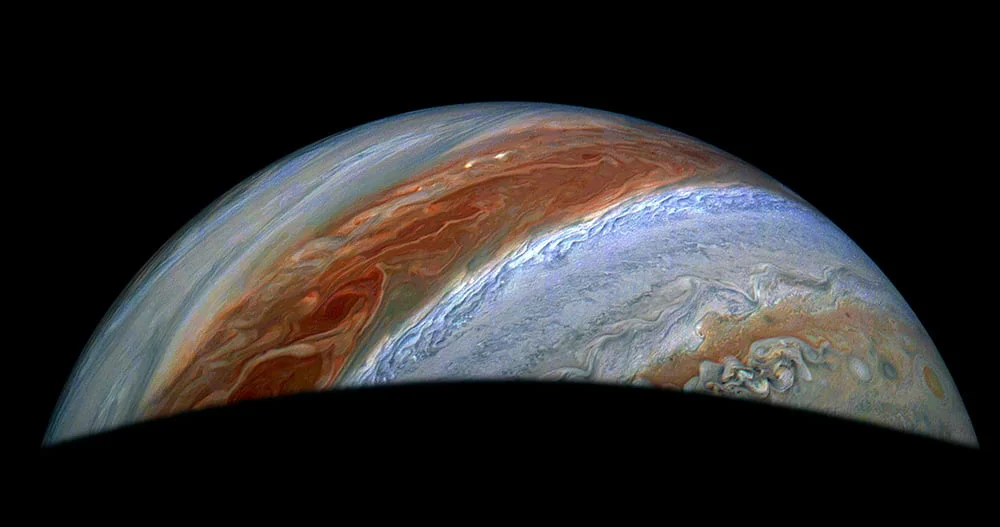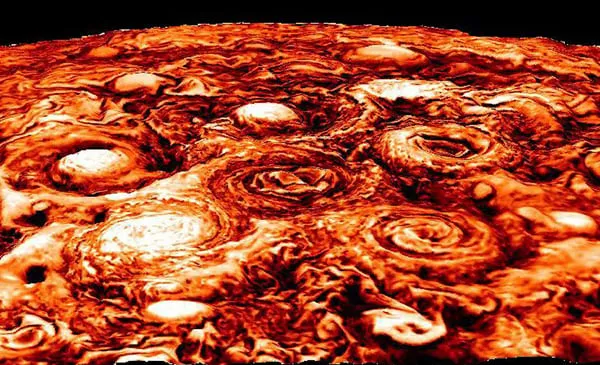
Juno Unveils Jupiter’s Fiery Secrets: Io’s Volcanoes and Giant Cyclones
NASA's Juno spacecraft continues to revolutionize our understanding of Jupiter and its moons, particularly the volcanically active Io. New data reveals extraordinary volcanic activity on Io and provides unprecedented insights into Jupiter's turbulent atmosphere.

The Forbes article "NASA’s Spacecraft Reveals Io To Be A Hellishly Active Volcanic Moon" highlights Juno's discoveries, stating that Io has undergone some of the most extensive volcanic eruptions ever witnessed in our solar system.
Io, about the size of our moon, is far hotter and more volcanically active than previously imagined. "There's nothing in our solar system that we've seen that has so many volcanoes all going off at the same time, continuously, hundreds of them," said Scott Bolton, principal investigator of NASA’s Juno. He further explained that Juno's polar orbit allowed for the first-time observation of Io's poles, revealing volcanoes across both.
The gravitational forces exerted by Jupiter constantly squeeze Io, causing its interior to heat up and erupt. Studying Io's volcanoes can provide valuable insights into volcanic activity on Earth.
SciTechDaily reported on Juno's mission, emphasizing that the spacecraft has uncovered warm lava flows beneath Io’s crust and how heat flows like a cosmic radiator across its surface. The Microwave Radiometer (MWR), teamed with data from the Jovian Infrared Auroral Mapper (JIRAM), provided a more complete view of Io's fiery interior. "At every latitude and longitude, there were cooling lava flows," said Shannon Brown, a Juno scientist.

Juno's radio occultation experiments have also revealed fascinating details about Jupiter's atmosphere. The temperature of Jupiter's north polar stratospheric cap is about 11 degrees Celsius cooler than its surroundings and is encircled by winds exceeding 161 kph (100 mph).
Long-term observations of Jupiter's massive northern polar cyclone and the surrounding eight cyclones have shown that these storms drift towards the pole and interact with each other. This interaction causes the cyclones to "bounce" off one another, stabilizing the entire configuration.
"One of the great things about Juno is its orbit is ever-changing, which means we get a new vantage point each time as we perform a science flyby," Bolton stated.
With its mission extended through September 2025, Juno promises to continue providing invaluable data about Jupiter and its moons. What other secrets does Jupiter hold, and how will Juno's discoveries reshape our understanding of gas giants and their moons? Leave your thoughts in the comments below!
